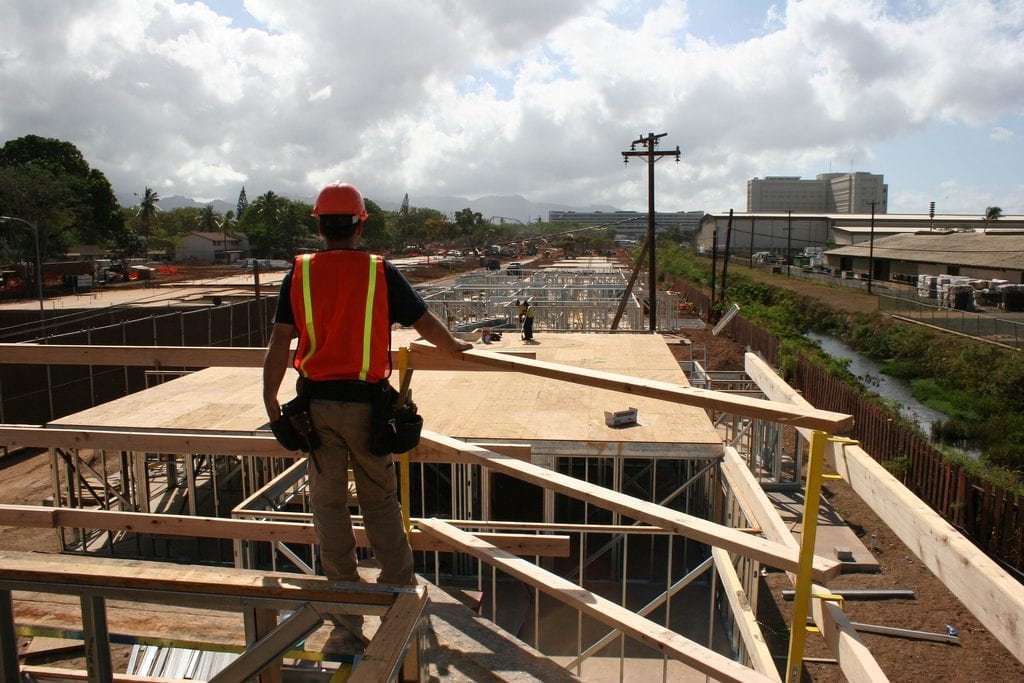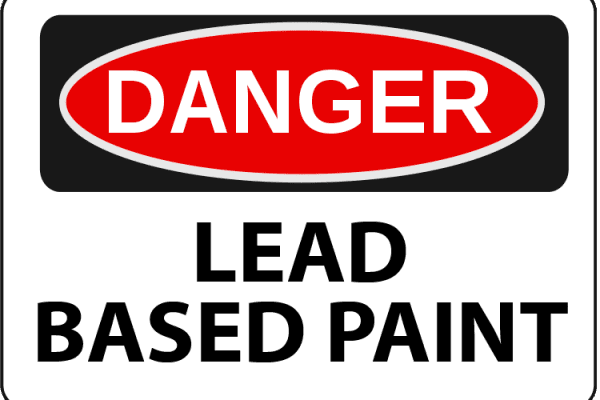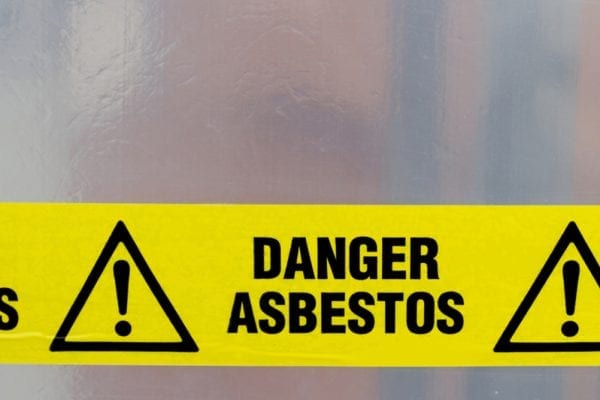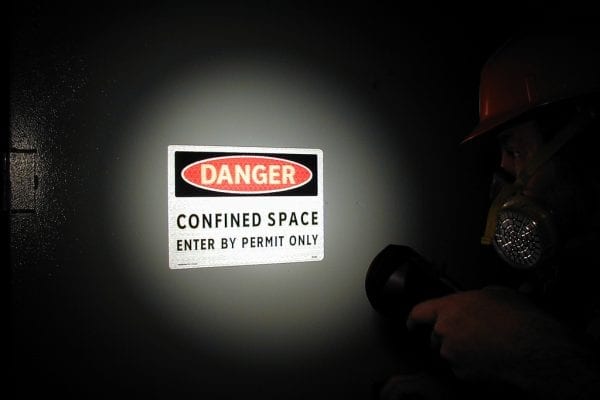Tragically, many of these injuries and deaths could have been prevented if the employer had been in compliance with OSHA guidelines. Yet, every year, tens of thousands of OSHA safety violations are issued, and many of them are the same year after year. Whether you’re a property owner, a manager, an employer, or a contractor, take care that you’re not putting your people at risk with one of these top ten OSHA safety violations.
#1 Fall Protection
Falls are a leading cause of death in the construction industry. According to OSHA, falling is responsible for a whopping 38.8% of construction worker deaths each year. Yet this continues to also be one of the top ways that employers fail to protect their employees.
In fiscal year 2016, OSHA issued 6,906 violations of Standard 1926.501, which governs fall protection. These include failures to provide:
- Adequate safety equipment and systems
- Proper supervision of employees
Common problems include inadequate fall protection PPE, underestimating the danger of a sloped roof, obstructed walkways, slippery walking surfaces, and employees failing to follow rules regarding safety equipment.
#2 Hazard Communication
Hazard communication refers to the employer’s obligation to notify and communicate with employees regarding hazardous materials in the workplace. This can be a problem in any work environment and is not confined to the construction industry. Within the construction industry, this problem often occurs when the employer fails to identify the presence of asbestos or other harmful materials prior to demolition activities.
In fiscal year 2016, OSHA issued 5,665 violations of Standard 1910.501, which governs hazard communication. These include failures to:
- Implement a hazardous communications program
- Train employees
- Develop and maintain safety data sheets (SDS)
#3 Scaffolding
Improperly designed, constructed, and loaded scaffolding is a common source of falls and injuries from falling objects on construction sites.
In fiscal year 2016, OSHA issued 3,900 violations of Standard 1926.451, which governs scaffolding. These include:
- Failure to protect employees from falls when working or standing on scaffolding above 10 feet
- Scaffolding platforms that are more than two feet above or below a point of access
- Lack of planking or decking on scaffolding platforms
- Inadequate fall and guardrail systems
Many of these violations may seem minor as long as everything goes well, which leads many employers and employees into dangerous complacency.
#4 Respiratory Protection
Dust, mold, asbestos, and other hazardous materials disturbed during construction or renovation can cause both short- and long-term health problems. A proper respiratory protection program helps ensure that workers are protected from these and other common contaminants.
In fiscal year 2016, OSHA issued 3,573 violations of Standard 1910.134, which governs respiratory protection. Common respiratory protection violations include:
- Lack of evaluation and identification of respiratory hazards
- Incomplete or missing respiratory protection program
- Improper fit of respiratory equipment
- Lack of medical evaluation for respiratory protection
#5 Lockout/Tagout
Proper lockout/tagout procedures protect workers from the hazards of unexpected energization of equipment and/or the release of hazardous energy during service and maintenance activities. These OSHA guidelines are an important protection for any workers who may come in contact with electrical components or electrically powered equipment, whether on the job site or elsewhere.
In fiscal year 2016, OSHA issued 3,406 violations of Standard 1910.147, which governs lockout/tagout procedures. Common violations include inadequacies in:
- Training
- Procedures
- Control programs
- Inspections
#6 Powered Industrial Trucks
Improper operation of industrial trucks is a safety hazard in any industrial or construction setting. These OSHA guidelines are designed to protect workers from the hazards of unsafe operation of trucks, forklifts, and tractors.
In fiscal year 2016, OSHA issued 2,855 violations of Standard 1910.178, which governs powered industrial trucks. Common violations include inadequacies in:
- Safe operation
- Truck repair and maintenance
- Training
- Certifications
- Operator evaluations
#7 Ladders
Ladders are a staple of construction sites and another cause of dangerous falls and injuries from falling objects. This OSHA guideline covers safety requirements for all types and sizes of ladders.
In fiscal year 2016, OSHA issued 2,625 violations of Standard 1926.1053, which governs ladders. Common violations include:
- Use of ladders for other than their designed use
- Employees carrying objects or loads likely to cause them to lose their balance
- Use of the top step as a step
- Structural defects
#8 Machine Guarding
Poorly guarded machinery can cause injuries when workers come in contact with hazardous components of the machinery, or when the machinery sends off sparks, fragments, or other projectiles.
In fiscal year 2016, OSHA issued 2,448 violations of Standard 1910.212, which governs machine guarding. Common violations include:
- Exposure of blades
- Point of operation violations
- Problems with anchoring of fixed machinery
- Other general requirements
#9 Electrical: Wiring Methods
The final two top OSHA violations both have to do with electrical systems. Construction workers and others can encounter hazards when exposed to improperly grounded wiring, whether in permanent electrical systems or temporary splicing and wiring.
In fiscal year 2016, OSHA issued 1,937 violations of Standard 1910.305, which governs electrical wiring methods. Common violations include:
- Failure to effectively close openings
- Failure to provide strain relief for flexible cords and cables
- Improper covers and canopies
#10 Electrical: General Requirements
Besides wiring, workers on construction sites and elsewhere encounter hazards when the general requirements of electrical systems are not met.
In fiscal year 2016, OSHA issued 1,704 violations of Standard 1910.303, which governs general electrical requirements. Common violations include problems with:
- Installation and use
- Guarding of live parts
- Services, feeders, and branch circuits
Unfortunately, for every OSHA violation citation, there are almost certainly dozens of other violations that are never cited. This means that many job sites are needlessly dangerous for workers, who may not discover the hazards until an accident happens. If you haven’t recently reviewed your OSHA compliance, odds are good that your job sites present unnecessary hazards to workers. Don’t wait to find out from OSHA or, worse, an accident. Make it a priority today to conduct a thorough OSHA compliance evaluation to ensure your people are safe.
If you need help in conducting a site safety evaluation, GLE’s Certified Safety Professionals and Certified Industrial Hygienists are ready to help.






